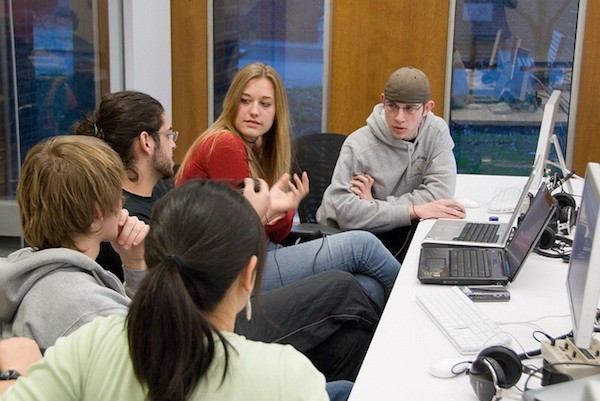What's Next for DML?

I recently returned from the engaging and rewarding DML2012 both exhausted and invigorated. As I debrief the many ideas and challenges to existing learning practices that were shared and explored at this year's DML conference, I am struck by the thought of where we, as a community, are headed.
Throughout the conference, I occasionally had moments of hesitation: we've grown since the first DML conference in 2010 in San Diego. We've grown a lot. And I think I'm most excited about the fact that we've grown in terms of diversity within the DML community. A lot. And yet, I think we can do more.
My personal goal as one of the conference committee members this year was to bring in more school practitioners and students into the DML space. As a teacher feeling that the ideas offered by DML significantly and positively impacted the experiences of my students, it was important to me for teachers and students to not only attend but also present and participate within the space of the conference. And I think generally, these two groups were much more present than in past DML conferences. In particular, I was thrilled to hear from teachers and students of color working in urban computer science classrooms, the cutting edge thinking about composition from National Writing Project teachers, and powerful youth testimony from the Council of Youth Research and the Black Male Youth Academy. I learned tremendously from these teachers and students in ways that I don't think the DML space offered in years past.
And yet, I think there is still a lot of work we, as a community committed to learning and equity, need to do. I heard sharp critiques at the conference about the lack of diversity of presenters. I heard of (and contributed to via Twitter) rumblings about the need for parent voice within these conferences. I only met two principals during the three days of the conference.
If it isn't obvious yet, I should make it clear that I am fighting for us -- the DML community -- to fight for our posterity in school educational opportunities. The focus on informal learning and alternative learning spaces is important. But as frustrating and difficult and hackneyed as work within public education can feel, it is still a large part of our young people's lived experiences. Echoing and somewhat challenging Diana Rhoten’s opening conference remarks, the space that students inhabit from "8-3" isn’t going away. The policies and restrictions placed on this formal school space -- the incessant testing, the limitations of the Common Core State Standards, the ways students feel "like victims" through school rules (as they mentioned in a powerful DML session) -- these are the factors that the digital media community can improve, challenge, and collaborate around.
I need to state that I write all of this with an overwhelming sense of enthusiasm and optimism. The possibility of paradigm shifting change as a result of the work by the DML community is more tangible daily.
But I think we can only do more when we build a stronger coalition of diverse representatives within this DML space. Considering this is only the third conference, I am wowed by how much has already taken place for a still nascent organization. And it is necessary for us to include more school-based agents in these spaces. For example, last month, the U.S. Department of Education unveiled a new campaign RESPECT (Recognizing Educational Success, Professional Excellence and Collaborative Teaching) focused on reframing the teaching profession with $5 billion tied to the initiative. At least in the many sessions I attended, this was not something discussed at DML. As difficult as the work may be, DML can push on systemic change within schools, if we work on this together.
In a session at this year's conference, I introduced myself as an "in-school rabble-rouser." I think that this is an appropriate label for the kinds of positions all of the DML community can don. I think a purposeful sense of mischief is just the thing that people trying to positively impact the outcomes of “schooling” should be striving for. I am inviting teachers, innovators, parents, and anyone who considers her or himself a stakeholder in the future of public education to begin a cogent discussion of how can we collectively and strategically rabble-rouse as a community. How can we, the growing and diverse DML community, bring in more partners and shake up the space in which most of our youth are going to spend a large chunk of their childhood?
Banner image credit: Weigle Information Commons http://www.flickr.com/photos/pennwic/5635062273/